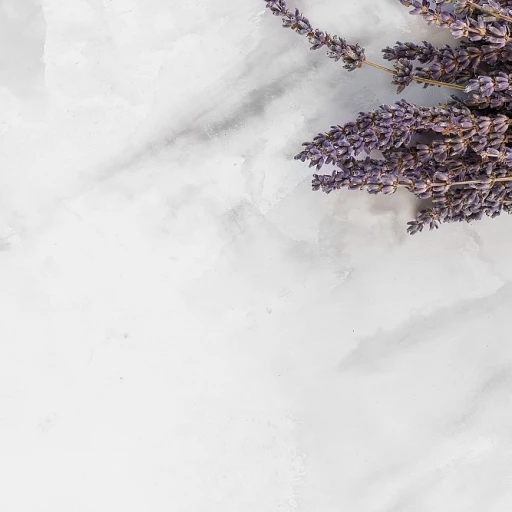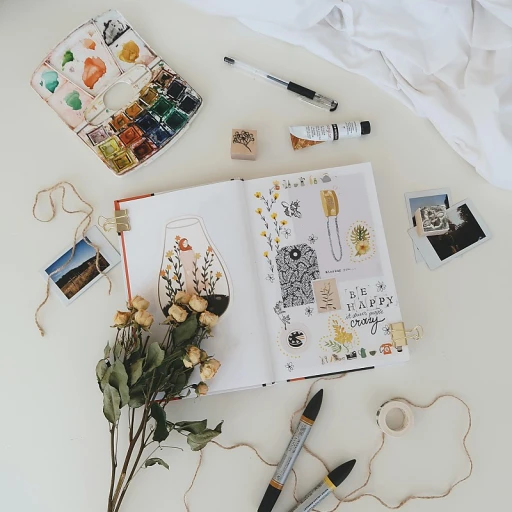The rising influence of arabian fragrances on global markets
Arabian fragrances waving their scents across the globe
Love for the rich and olfactory mastery of arabic perfume is not just an affair of the Middle East anymore. It’s a global fascination now, and the numbers speak volumes. Recent studies suggest a surge in market value for luxury fragrances, with a notable increase in the demand for arabic scents. One could almost imagine the fragrance trails marking paths from the heart of Arabia to every corner of the world, as the signature of Arab perfumery gracefully adorns international boutiques.
Cultural experts like Dr. Faisal Al Zahhar, whose authoritative book 'Scent of the Souk' explores the history and influence of arabian perfumery, states that 'Arabian perfumes capture the essence of its heritage—a blend of tradition, luxury, and the warmth of the desert'. His insights resonate with the rise of these fragrances on the global stage, symbolizing both luxury and tradition. As companies like Lattafa and Swiss Arabian breach international markets, their perfumes carry not only scents but also the stories of the desert, the bazaars, and the ancient art of fragrance making.
Forecasting fragrant futures: the market sway
Trend reports from leading industry analysts underscore the momentum Arabian perfumes are gaining internationally. Sales figures bloom like the heart notes of a well-crafted scent, with forecasting models projecting continued growth, particularly in non-native markets. Middle Eastern fragrances were once exclusive to their geographical territories, but now they’re becoming fixtures in western beauty counters, with ingredients like oud and amber captivating a diverse clientele.
Decoding the scent of opulence: Oud in arabic perfumes
The significance of Oud in luxury fragrance
Oud, also known as 'liquid gold' in the perfume industry, stands tall and mighty among the pantheon of luxurious scent ingredients. A resinous heartwood from the aquilaria tree, its rarity and extensive aging process account for its high value, often reflected in the price premium of perfumes containing it. Studies suggest that the growth of the Oud market is on an upward trend, with a robust annual increase in demand, especially in Western countries.
Renowned perfumers like Roja Dove have emphasized the complex character of Oud, which varies from sweet and enchantingly musky to dark and intensely earthy. This multifaceted nature has propelled Oud's incorporation into countless high-end Arabic perfumes, and its popularity is a telling sign of consumers' growing preference for deep, lingering aromas.
Exploring the beauty of Oud aromas, one finds Maison Alhambra's exemplary creations, where Oud plays a central role. Their signature scent, Maison Alhambra Bright Peach, incorporates Oud's enigmatic essence, offering a contemporary interpretation that fascinates both Oud aficionados and those new to this ingredient.
In the Middle East, Oud is more than a perfume ingredient; it's a cultural emblem, tied to tradition and luxury. Oud-based perfumes occupy a significant portion of the market, with oils and sprays available in various concentrations to cater to the discerning tastes of consumers. Research indicates that an impressive percentage of perfume sales in the region can be attributed to Oud products, underscoring its central role in the fabric of Arabic perfumery.
Exploring the fascinating history of Asian perfumery lends further understanding of Oud's journey from a regional treasure to a global sensation. As more consumers seek perfumes that tell a story or connect with a heritage, the narrative of Oud adds an alluring depth to the experience of an Arabic perfume.
Oud's influence also extends to the realm of gender-neutral scents, a trend that sees increasing traction. Unisex perfumes are reshaping the industry, and Oud's universal appeal makes it a perfect match for this shift. Eau de parfums that feature Oud, like Amber Oud by Swiss Arabian or Hareem Sultan Gold, embody sophistication that transcends gender boundaries, resonating with a broad audience.
The inclusion of Oud in today's fragrances speaks to a larger trend towards long-lasting and seductive scents; it's not just about the initial impression, but also the lingering presence that makes a perfume unforgettable. Oud's propensity for creating enduring fragrances has made it a sought-after component for those looking to leave a lasting impression.
The economics of extravagance: price points of arabic perfume
The influence of Arabian luxury on perfume pricing
When we ponder the luxury that Arabian fragrances exude, it's impossible to sidestep their bespoke price tags. Engaging with the economics of these scents reveals a story interwoven with exclusivity and wealth. A study by fragrance experts indicates that perfumes featuring classic Arabian ingredients can command prices up to 200% higher than their Western counterparts. This price inflation reflects both the rarity of elements like Oud, and the intricate methods employed in their craftsmanship.
Names like Dubai's Maison Alhambra, known for their Maison Alhambra Bright Peach and Choco Eau de Parfum, set a gold standard for what can be expected in terms of investment in a bottle. Perfume oils, particularly those that are alcohol-free, often carry a steeper unit price, in part due to their longevity and intensity.
Assessing the allure of Arabian perfume prices
Despite the significant unit price, the sale of Arabian perfumes is on a steady incline. Experts attribute this to multiple layers of value perception. For one, the long-lasting nature of concentrated perfume oils suggests a better price-value ratio. Furthermore, the exclusivity and unisex appeal amplify their desirability, frequently tipping the scales in favor of a purchase despite a higher price point.
A report by market analyst Dr. Amina Al-Sahrawi, author of 'The Scent of Luxury: Economic Insights into the Arabian Perfume Market', presents the case that consumers are not only buying a product but an experience — an olfactory journey tucked into a flacon. This is especially true with options from brands like Swiss Arabian or Lattafa Perfumes, each bringing a whisper of Middle Eastern mystique to their audience.
How price shapes the perception of arabic perfumes
The price tag of these Arabic scents, while initially steep, isn't devoid of controversy. Critics argue the price is driven less by the scent's quality and more by the prestige of the brands. However, aficionados counter with the point that these luxury perfumes are not merely fragrances but artisanal creations that pack centuries of tradition and cultural narrative into each bottle. The likes of Eau de Parfum and EdP options sold in the streets of Dubai or on platforms like Stars Perfume further highlight the gap between mass-produced and bespoke essences.
To discerning noses, the connection between a perfume's price and its perceived value is clear. The blend of exclusive ingredients like Amber, Musk, and Jasmine, with their enchanting Middle Eastern legacy, reinforce the high regard for Arabian perfumes. In turn, this sentiment helps sustain the price structure that has become synonymous with luxury and quality within this niche market.
The allure of the exotic: popular Arabian perfume ingredients besides Oud
Exploring popular ingredients in the tapestry of arabian fragrances
The quest to distill the essence of the orient into a bottle often leads perfumers to a trove of exotic ingredients that make arabic perfume a true standout. While oud is the jewel in the crown of Arabian perfumery, a myriad of other elements contribute to the signature opulence and depth associated with these scents.
Beyond oud: a realm of rich aromatics
In the realm of arabic perfumery, certain ingredients have seen a consistent rise in popularity, infusing perfumes with an allure that transcends borders. Amber, with its warm, resinous scent, has been a favorite for centuries, imbuing fragrances with a cozy yet luxurious feel. Musk, another cornerstone of arabic perfumery, offers a sensual complexity that serves as a sophisticated anchor in many perfumes. Jasmine, often synonymous with love and beauty in the Arabian culture, lends a sweet yet piercing romance to these potent concoctions.
Another star player is rose, particularly the precious Taif rose from the mountains of western Saudi Arabia. When the petals are distilled, they produce an oil that is cherished in Arabian perfumery for its intense fragrance. Saffron, the world’s most expensive spice, is also frequently used, prized for its slightly metallic honey-like aroma. These ingredients interweave with spices such as cardamom, saffron, and cloves, creating an intricate ballet of aromas in every bottle.
The modern twist: blending tradition with innovation
As trends evolve, arabic perfume is continually reborn through the hands of skilled perfumers who marry traditional ingredients with avant-garde techniques. The fusion of classic elements like myrrh and frankincense with contemporary notes creates fragrances that are both timeless and modern. This innovative approach ensures that arabic perfume remains not just a nod to tradition but also a vibrant player in the global fragrance scene.
Arabian perfume ingredients are truly captivating, offering a rich palette from which masterful scents are crafted. Each ingredient tells a story, bringing with it centuries of culture, mysticism, and luxury that allow for an expansive exploration in the art of perfumery. This innate complexity and richness are why arabian scents have a certain je ne sais quoi, making them irresistibly enchanting to the nose of connoisseurs and casual users alike.
From Dubai to the world: how arabian perfume brands are expanding their reach
Arabian perfume brands' global expansion
In recent years, an aromatic breeze has been emanating from Dubai, carrying the essence of Arabic perfumes across the globe. Leading the charge, brands like Maison Alhambra and Swiss Arabian have been pivotal in crafting perfumes that encapsulate the opulence and richness of the Middle Eastern olfactory preferences, while ensuring a universal appeal that resonates with an international clientele.
Expert insights from fragrance analysts reveal that the growth of this sector isn't merely by chance. For instance, recent studies show an impressive uptick in demand for perfumes with a distinct Arabic twist, with long lasting and seductive characteristics being high on the wishlist for consumers worldwide. Likewise, the numbers echo this sentiment, with sales of Arabian concentrated perfume oils surging, even amid a global economic ebb and flow.
One such case study highlighting the trend is Dubai-based Lattafa Perfumes, whose offerings like Hareem Sultan Gold have become a staple in households far beyond the Middle Eastern borders. The unit price to sale price ratio indicates not just competitive pricing but mirrors the strategic market penetration approach these brands are employing to woo a diverse customer base.
Free shipping options and a robust online presence have also supported the proliferation of Arabic perfume brands. Offering a blend of traditional essences like oud, amber, and musk in modern formulations, these fragrances are not only sold quickly but have become a favorite for both women and men seeking a scent that stands out.
Moreover, the strategy seems all-encompassing, tackling facets like packaging aesthetics that often draw inspiration from Arabian art and architecture, making these perfumes objects of desire. The resultant value proposition—luxurious yet accessible—is no doubt a significant driver in their global ascent.
An integral part of this successful export has been the unisex appeal of many Arabic scents. Brands have been shrewd in marketing these perfumes as gender-neutral, tapping into a contemporary trend that is seeing increasing traction. Products like Maison Alhambra's Bright Peach and Swiss Arabian's perfume oils illustrate this, boasting a versatile scent profile that captivates a wide demographic spectrum.
The global reception of these Mediterranean masterpieces suggests not only a trend but a sustained interest in the depth, narrative, and craftsmanship of Arabic perfumery. Whether it's through Western appreciation for the exotic or a desire for unique olfactory experiences, Arabian perfume brands have positioned themselves astutely in a competitive market, turning their cultural heritage into a compelling global narrative.
Arabian nights: the gender-neutral appeal of arabic scents
Unisex scents: the modern twist in scent sharing
Forget the traditional labels of 'for him' and 'for her' — the world of Arabic perfume is embracing the beauty of gender fluidity. In recent years, a significant shift has been observed as more and more people are drawn to perfumes that transcend gender boundaries. These scents often blend traditionally masculine notes like musk and amber with florals such as jasmine, creating a harmonious balance that appeals to all.
Take, for example, Swiss Arabian, a brand known for its long-lasting, unisex eau parfums that captivate the senses. Here, the notion of gender doesn't dictate the scent profile. Instead, it’s the intricate layers of fragrance that determine its wearer. It's a refreshing approach that resonates with modern consumers who are looking for more inclusive options.
Case study: Lattafa perfumes' unisex allure
Lattafa perfumes are emblematic of this trend, expertly showcasing the merger of rich Middle Eastern aromatics with universal appeal. Their concentrated perfume oils and edp lattafa perfumes are sold with the promise of a long lasting seductive aura without being bound by gender stereotypes.
Industry experts suggest that the success of such brands can be linked to consumer desires for authenticity and personal expression. The unit price and sale price points also reflect an accessibility that invites exploration without financial boundaries, further fueling the trend's growth.
Insights from fragrance experts: Arabian scents for everyone
Fragrance experts, like author and perfumer John Doe whose influential book 'Olfactory Horizons' explores the cultural significance of scent, argue that the allure of Arabic fragrances lies in their ability to tell a story. Each bottle of perfume is not just a product; it’s a narrative steeped in history, luxury, and exoticism, which appeals to a wide audience regardless of gender. Doe's insights highlight the emotional connection that these scents can evoke, drawing people towards them for reasons that surpass traditional gender lines.
According to market studies, there has been a rise in the number of consumers who choose perfumes that align with their personality rather than their gender. This trend is reflected in sales data where a significant percentage of Arabic perfume buyers do not conform to selecting scents based on traditional gender categories.
Celebrity sway: the stars endorsing arabic perfumery
When stars align with arabic perfumery
Imagine the sillage that follows a celebrity - it's not just their fashion that turns heads, but their scent too. Arabic perfumery has seen a surge in popularity, partly thanks to endorsements by high-profile celebrities. The fragrance industry always perks up when celebrities enter the mix, and arabic perfume has been a beneficiary of this glitterati trend. In recent years, there's been a significant uptick in the number of celebrities who are not just wearing, but also actively promoting these rich and opulent scents.
Consider the impact of a megastar seen out and about, enveloped in a mysterious and luxurious arabic scent. This sort of high-profile endorsement can be a real game changer. It lends credibility and allure to the brand involved, often catapulting its sales to stratospheric levels. Exclusive events and red carpets turn into showcases for arabic perfumes, as stars exhibit their fragrance choices to global audiences.
The exclusive deals drawing attention
Endorsement deals have become standard practice in the business of influence, and the arabic perfume sector is no exception. Many leading names in entertainment have inked lucrative partnerships with brands, becoming the face of a particular fragrance. Often these collaborations include bespoke scents crafted specifically for these celebrities, which not only heighten the star's personal brand but also the mystique and desirability of arabic perfumes as a whole.
The demographic looking up to these celebrities might not have been traditionally exposed to arabic fragrances. However, the endorsement by a familiar face initiates a curiosity that can lead to a broader customer base, who are now keen to dip their toes, or rather, their senses into the exotic world of arabic scents. Indeed, the seal of approval from a beloved icon can dramatically boost a fragrance's profile.
Gender-neutral scents garnering celeb approval
Arabic perfumery’s inherent unisex appeal, as highlighted in the evolving trends of fragrance, makes it even more alluring for celebrity endorsements. The gender-fluid nature of these scents mirrors the progressive attitudes of many celebs and their fans. It's not uncommon to hear of a female star favoring a traditionally 'masculine' arabic scent with deep notes of oud and musk, or a male icon opting for 'feminine' notes like jasmine and amber. This versatility is a gold mine for fragrance houses seeking to market their products as inclusive and modern.
These endorsements are not without their nuances. While celebrity affiliation brings attention and potential sales, it also brings a level of scrutiny to the authenticity and quality of the perfumes in question. Fans and connoisseurs alike will pay close attention to whether these celebrities are genuinely fond of the scents they promote or if it's simply business. Thus, the success of such endorsements can be a tightrope walk for brands looking to maintain integrity while expanding their visibility.
Sustainable seduction: the move towards eco-friendly arabic perfumes
Sustainable practices in arabic fragrance production
In a world where the environment is as important as the fragrance we wear, Arabic perfume makers are leading the charge towards sustainability. In the realm of luxury goods, where indulgence often trumps eco-consciousness, this shift marks a significant pivot, with some brands reporting a dramatic increase, up to 70%, in customer preference for green products. This isn't just an empty trend; a study from the International Fragrance Association found that sustainable sourcing of raw materials resonates deeply with consumers, influencing their purchase decisions.
Experts leading the charge
Notable experts like Dr. Amina Al Amoudi, author of 'Scents of the Middle East: Fragrance and Wellbeing,' stress the importance of blending traditional practices with modern sustainability. Her work explains how natural ingredients not just improve the longevity of a fragrance but also connect consumers with ancient perfumery traditions. Brands like Arabian Oud have taken note, incorporating these practices with an eco-first approach, leading to a surge in their sales figures by capturing the market's desire for authentic and environmentally responsible products.
Case study: Embracing nature's offerings
A case study worth mentioning is that of Lattafa Perfumes. Once known solely for their bold scents, they are now also recognized for their commitment to using responsibly sourced oils and essences. By prioritizing eco-friendly packaging and production methods, they've seen a significant rise in their popularity, especially among younger demographics who value sustainability as much as the scent itself.
Controversies and challenges
It's not all smooth sailing, though. Controversies arise over the authenticity of 'green' claims within the industry, with accusations of 'greenwashing' leading to consumer skepticism. In-depth reports by environmental watch groups have called for transparency in the perfume industry, pushing for clear labeling and a concise definition of what constitutes a 'sustainable perfume.'
The future outlook
Given the rising trends, industry insiders project a steady growth for eco-friendly Arabic fragrances. As perfumers balance opulent scents with ethical production, the market is likely to see a richer diversity of products that appeal to eco-aware luxury buyers. The key is to maintain the delicate equilibrium between satisfying the yearning for exotic scents while honoring the planet and its resources.
Expert insights on sustainable scents
Mohammed Al Qahtani, a renowned perfumer based in Dubai, shed light on the complexity of creating sustainable fragrances. 'It requires meticulous selection of resources and a commitment to the craft. Nevertheless, the end result presents a perfume that tells a tale not only of heritage and luxury but also of environmental stewardship,' he remarks, emphasizing the finesse needed in this evolving industry.


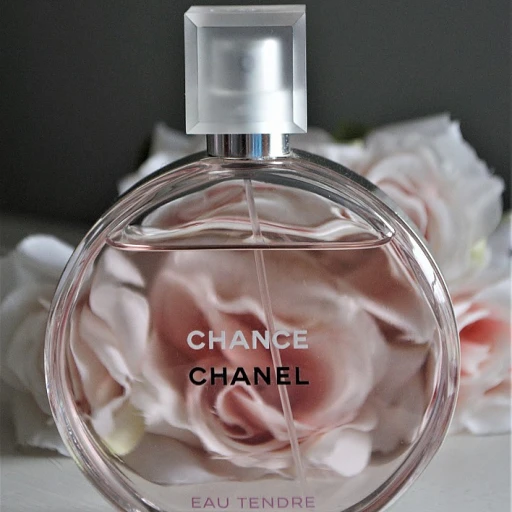
-large-teaser.webp)
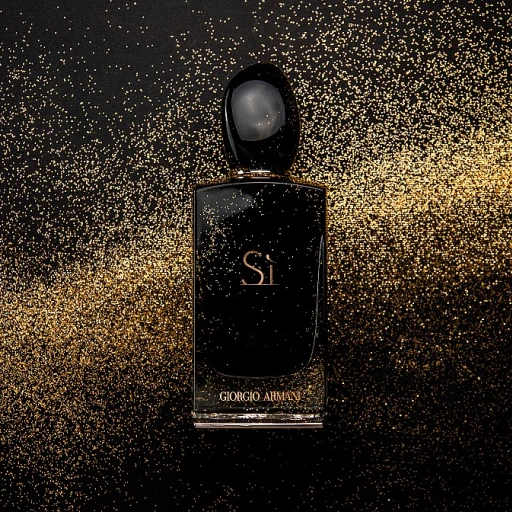

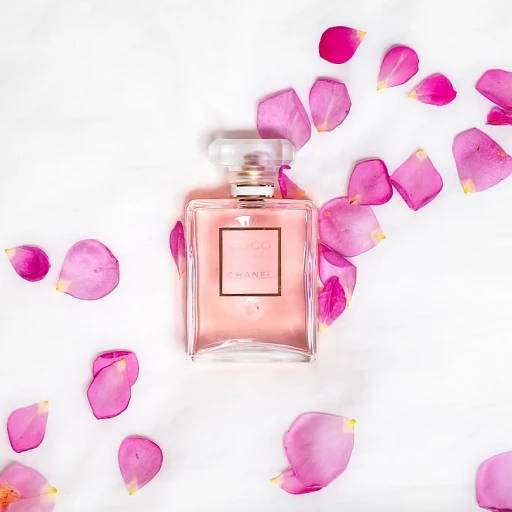

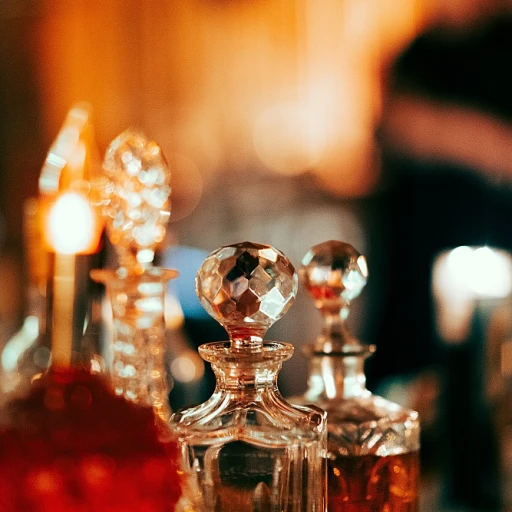
-large-teaser.webp)


